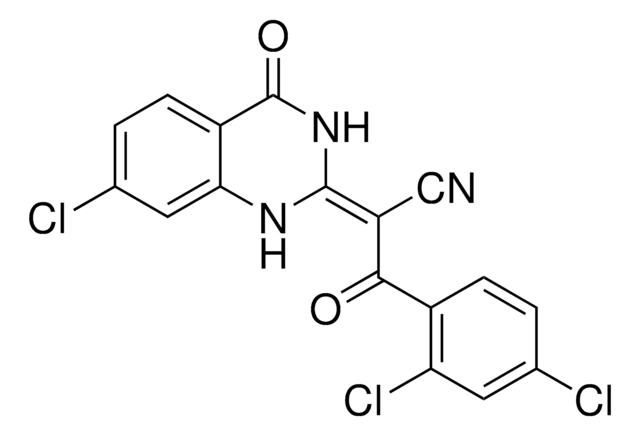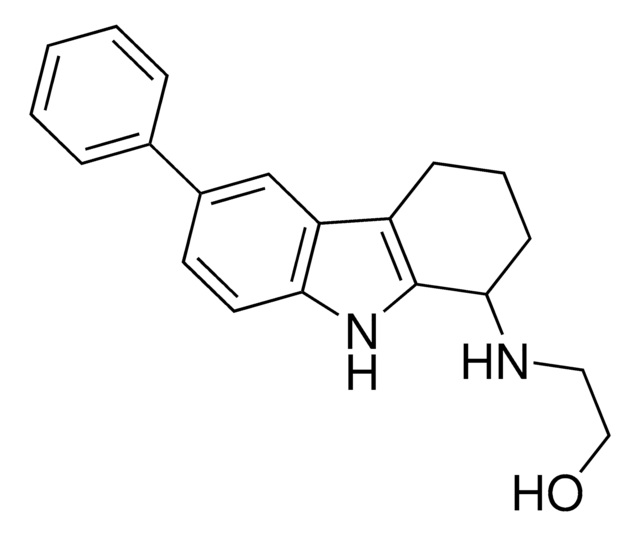There is a slight difference in the chemical structure of each compound. Cytochalasin B is a cell-permeable fungal toxin. It Inhibits cytoplasmic division by blocking the formation of contractile microfilaments, inhibits cell movement, and induces nuclear extrusion. Cytochalasin B shortens actin filaments by blocking monomer addition at the fast growing end of polymers. It also Inhibits glucose transport and platelet aggregation, blocks adenosine-induced apoptotic body formation without affecting activation of endogenous ADP-ribosylation in leukemia HL-60 cells. Dihydrocytochalasin B (DCB) is a member of the cytochalasin mycotoxin family that inhibits actin assembly. It has an effect on cell motility and morphology similar to that of cytochalasin B. However, it does not inhibit glucose transport. The following publication may be of interest:
https://pubmed.ncbi.nlm.nih.gov/272649/
250233
Cytochalasin B
from Helminthosporium dematioideum, ≥98% (HPLC), solid, cell-permeable fungal toxin, Calbiochem®
Synonim(y):
Cytochalasin B, Helminthosporium dematioideum
Wybierz wielkość
Wybierz wielkość
About This Item
Polecane produkty
Nazwa produktu
Cytochalasin B, Helminthosporium dematioideum, Cell-permeable fungal toxin.
Poziom jakości
opis
Merck USA index - 14, 2790
Próba
≥98% (HPLC)
Formularz
solid
producent / nazwa handlowa
Calbiochem®
warunki przechowywania
OK to freeze
protect from light
kolor
white
rozpuszczalność
methanol: 20 mg/mL
DMSO: 50 mg/mL
Warunki transportu
ambient
temp. przechowywania
−20°C
ciąg SMILES
N1[C@H]([C@H]3[C@@]4(OC(=O)\C=C\[C@@H](CCC[C@H](C\C=C\[C@H]4[C@@H](C(=C)[C@H]3C)O)C)O)C1=O)Cc2ccccc2
InChI
1S/C29H37NO5/c1-18-9-7-13-22(31)15-16-25(32)35-29-23(14-8-10-18)27(33)20(3)19(2)26(29)24(30-28(29)34)17-21-11-5-4-6-12-21/h4-6,8,11-12,14-16,18-19,22-24,26-27,31,33H,3,7,9-10,13,17H2,1-2H3,(H,30,34)/b14-8+,16-15+/t18-,19-,22-,23+,24+,26+,27-,29-/m1/s1
Klucz InChI
GBOGMAARMMDZGR-TYHYBEHESA-N
Opis ogólny
Działania biochem./fizjol.
Blocking the formation of contractile microfilaments
Przestroga
Ostrzeżenie
Rekonstytucja
Inne uwagi
Theodoropoulos, P.A., et al. 1994. Biochem. Pharmacol. 47, 1875.
Benya, P.D., and Padilla, S.R. 1993. Exp. Cell Res. 204, 268.
Cairns, M.T., et al. 1991. J. Biol. Chem.266, 8176.
Nowak, D. 1990. Biomed. Biochim. Acta49, 353.
Wang, F., et al. 1990. Biochem. Biophys. Res. Commun.171, 543.
Edwards, S.W., and Lloyd, D. 1988. FEBS Lett.227, 39.
Informacje prawne
Hasło ostrzegawcze
Danger
Zwroty wskazujące rodzaj zagrożenia
Zwroty wskazujące środki ostrożności
Klasyfikacja zagrożeń
Acute Tox. 1 Inhalation - Acute Tox. 2 Dermal - Acute Tox. 2 Oral - Repr. 2
Kod klasy składowania
6.1A - Combustible acute toxic Cat. 1 and 2 / very toxic hazardous materials
Klasa zagrożenia wodnego (WGK)
WGK 3
Certyfikaty analizy (CoA)
Poszukaj Certyfikaty analizy (CoA), wpisując numer partii/serii produktów. Numery serii i partii można znaleźć na etykiecie produktu po słowach „seria” lub „partia”.
Masz już ten produkt?
Dokumenty związane z niedawno zakupionymi produktami zostały zamieszczone w Bibliotece dokumentów.
Klienci oglądali również te produkty
-
Cytochalasin B, Helminthosporium dematioideum & other option is Dihydrocytochalasin B. What is the difference?
1 answer-
Helpful?
-
Active Filters
Nasz zespół naukowców ma doświadczenie we wszystkich obszarach badań, w tym w naukach przyrodniczych, materiałoznawstwie, syntezie chemicznej, chromatografii, analityce i wielu innych dziedzinach.
Skontaktuj się z zespołem ds. pomocy technicznej











